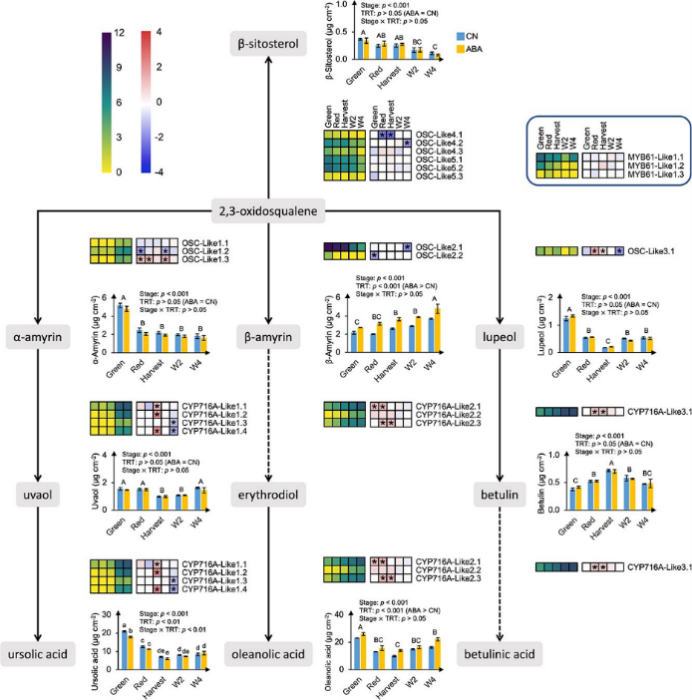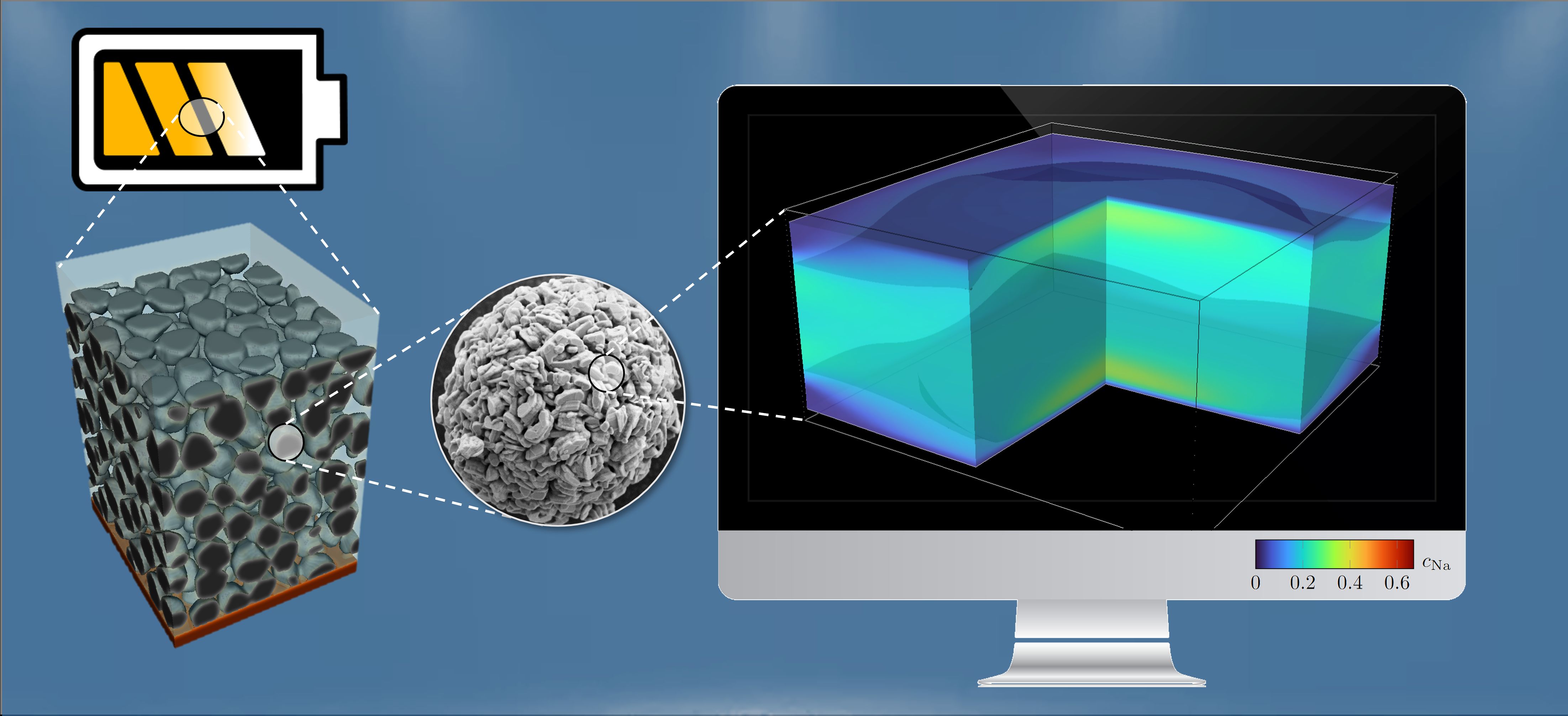Researchers will delve into emerging research in diabetes, obesity, reproductive health and other aspects of hormone health during the Endocrine Society’s ENDO 2024 news conferences June 1-4.
Month: May 2024
Donepezil Does Not Improve Chemotherapy-Related Cognitive Impairment
Researchers at Wake Forest University School of Medicine conducted a Phase III randomized, placebo-controlled trial to test donepezil, a cognitive-enhancing medicine used in the treatment of Alzheimer’s disease. The research team found that donepezil did not improve memory or other cognitive functions in survivors with cancer-related cognitive impairment.
Very Grateful Patient Returns to NJ Hospital to Motivate Patients & Team Members During National Hospital Week
Grateful Patient Returns to Hackensack University Medical Center to Motivate Patients & Team Members During National Hospital Week 2024
Meeting preview: Hot topics at NUTRITION 2024
Thousands of top nutrition experts will gather next month for a dynamic program of research announcements, policy discussions and award lectures at NUTRITION 2024, the annual flagship meeting of the American Society for Nutrition. Reporters and bloggers are invited to apply for a complimentary press pass to attend the meeting in Chicago from June 29–July 2.
Oncology Events in Poland Solidify Collaboration with NCCN
The National Comprehensive Cancer Network participates in meetings hosted by Maria Sklodowska-Curie National Research Institute of Oncology, the Polish Oncological Society, and Alliance for Innovation to advance work adapting proven cancer treatment guidelines for Poland.
Hearst Health Prize judging panel selects two finalists; Winner to be announced at UCLA Health Data Day
Hearst Health and the UCLA Center for SMART Health today announced that a panel of expert judges has selected Mount Sinai Health System and The University of Texas MD Anderson Cancer Center as the 2024 Hearst Health Prize finalists. The winner will be announced at UCLA Health Data Day on June 4, 2024.
AI Can Help Improve ER Admission Decisions, Mount Sinai Study Finds
Generative artificial intelligence (AI), such as GPT-4, can help predict whether an emergency room patient needs to be admitted to the hospital even with only minimal training on a limited number of records, according to investigators at the Icahn School of Medicine at Mount Sinai.
MIRA Pharmaceuticals in Discussions with Memorial Sloan Kettering to Collaborate on Preclinical Cancer Pain Model Utilizing The Company’s Novel Oral Ketamine Analog
MIRA Pharmaceuticals, Inc. (NASDAQ: MIRA) (“MIRA” or the “Company”), a pre-clinical-stage pharmaceutical company focused on the treatment of neurologic and neuropsychiatric disorders, announced it is in advanced discussions with Memorial Sloan Kettering Cancer Center (MSK) to initiate a preclinical study evaluating MIRA’s novel oral ketamine analog, Ketamir-2, for the treatment of cancer-related pain and depression.
From ‘Yellow Peril’ to COVID-19: New book takes unflinching look at anti-Asian racism
Univerisity of Colorado Boulder professor Jennifer Ho, editor of a new collection about global Anti-Asian racism, shares insights on what’s driving it and how communities are fighting back.

Researchers Conduct First-of-Its-Kind Review of Anesthesia Exposure’s Impact on Childhood Brain Development
Anesthesia makes it possible for infants and children to undergo medical procedures and surgeries that save or improve the quality of their lives. Some children must receive anesthesia multiple times while very young. While anesthesia is an essential tool, it may also disrupt the developing brain, leading to later cognitive and behavioral issues.

Unlocking the secrets of citrus greening: a milestone in cultivating Candidatus liberibacter asiaticus
Researchers have achieved significant progress in understanding citrus greening by developing a method to cultivate Candidatus Liberibacter asiaticus (Las) in vitro. This bacterium is responsible for the devastating citrus disease Huanglongbing (HLB). The study’s findings pave the way for further research into the pathogen’s biology and potential control strategies.
‘Good’ Fat Metabolism Changes Tied to Estrogen Loss, Not Necessarily to Aging
Brown fat metabolism decreases in older men and women, but the decrease in women is not necessarily tied to age, according to new research. The first-of-its-kind study is published ahead of print in the American Journal of Physiology-Endocrinology and Metabolism and has been chosen as an APSselect article for May.

Unlocking blueberry quality: the role of cuticular waxes
New research uncovers the molecular regulation of cuticular wax biosynthesis in blueberries, highlighting how these natural coatings affect crucial fruit quality traits like water loss and surface color during ripening and storage, providing valuable insights for improving blueberry quality.

Batteries: Modeling Tomorrow’s Materials Today
Which factors determine how quickly a battery can be charged? This and other questions are studied by researchers of Karlsruhe Institute of Technology (KIT) with the help of computer-based simulations.

Study that empowers traditional health practitioners to test for HIV expands in rural South Africa
A National Institutes of Health five-year, $2.8 million grant to Wits and Vanderbilt University will advance traditional health practitioner-initiated HIV testing.

Renewable aviation fuels prepare for take-off in Australia
Aviation experts from the University of South Australia (UniSA) will work with their Chinese counterparts over the next two years to develop a sustainable aviation biofuel industry in both countries.
New Senior Fellow Prof. Marc Fontecave joins HKIAS
We are pleased to announce that Prof. Marc Fontecave, a world-renowned chemist, has been appointed as the Senior Fellow of the Hong Kong Institute for Advanced Study (HKIAS), City University of Hong Kong.
Scientists aim to stop harmful gut bacteria triggering Alzheimer’s
Australian scientists are exploring how harmful gut bacteria from a poor diet can access the brain and trigger early onset Alzheimer’s disease.

Ten UCLA Nurses Recognized by the Simms/Mann Family Foundation
Ten UCLA Health nurses are among 40 honored by the Simms/Mann Family Foundation in the second year of a campaign to recognize extraordinary nurses in Los Angeles.
Blood RNA Biomarkers Identify Bacterial and Biofilm Coinfections in COVID-19 Intensive Care Patients
Abstract Purpose: Secondary opportunistic coinfections are a significant contributor to morbidity and mortality in intensive care unit (ICU) patients, but can be difficult to identify. Presently, new blood RNA biomarkers were tested in ICU patients to diagnose viral, bacterial, and biofilm…
CINCIA anuncia una investigación pionera sobre la contaminación mundial por mercurio de peces y vida silvestre
El Centro de Innovación Científica Amazónica (CINCIA) anuncia la publicación del artículo científico “Global Mercury Concentrations in Biota: Their Use as a Basis for a Global Biomonitoring Framework” en la revista científica Ecotoxicology.
Can coal mines be tapped for rare earth elements?
A team of geologists led by the University of Utah analyzed 3,500 samples taken in and around coal mines in Utah and Colorado. Their findings open the possibility that these mines could see a secondary resource stream in the form of rare earth metals used in renewable energy and numerous other high-tech applications.

Ochsner Health hosts BD Medication Management Advisory Board
Ochsner Health recently welcomed more than 20 healthcare executives from 10 renowned US health systems at the BD Strategic Medication Management Advisory Board event. Facilitated by BD, the two-day event occurred on April 30 and May 1 at Ochsner facilities in New Orleans, Louisiana.
Autoimmune disease not associated with monoclonal gammopathy
A study of more than 75,000 persons screened for monoclonal gammopathy of undetermined significance (MGUS) found no association between the presence of autoimmune diseases and MGUS.
Definitions and models of care for long COVID remain unclear
A scoping review of 38 published articles related to the definition and care of long COVID found differences between reported definitions and models of care for the condition.
AI tool useful but not a replacement for human screening of the literature for systematic reviews
An analysis of the AI tool GPT 3.5 Turbo found that it may be used as a second reviewer for title and abstract screening and may reduce the number of citations before screening by humans at the cost of creating additional work by adding false positives and missing citations.
Cicadas and tinnitus: What’s the connection?
Fatima Husain, a Beckman researcher and professor of speech and hearing science, explains why individuals with tinnitus may find peace among the audial onslaught and offers suggestions for how people can safely shield their ears from the impending “wall of…
Long-term ocean sampling in Rhode Island’s Narragansett Bay reveals plummeting plankton levels: impact uncertain for local food web
Digitizing decades worth of pre-computer files held in storage at the Narragansett Bay campus let oceanographers at the University of Rhode Island get a better picture of Narragansett Bay over time. URI operates the longest-running time series in Rhode Island, which now reveals that the level of phytoplankton in the bay has dropped by half in the last half century.

UC Irvine-Led Team Uncovers ‘Vigorous Melting’ at Antarctica’s Thwaites Glacier
A team of glaciologists led by researchers at the University of California, Irvine used high-resolution satellite radar data to find evidence of the intrusion of warm, high-pressure seawater many kilometers beneath the grounded ice of West Antarctica’s Thwaites Glacier.
Nano Drug Accelerates Diabetic Wound Healing in Mice
Researchers at the Icahn School of Medicine at Mount Sinai have designed a regenerative medicine therapy to speed up diabetic wound repair. Using tiny fat particles loaded with genetic instructions to calm down inflammation, the treatment was shown to target problem-causing cells and reduce swelling and harmful molecules in mouse models of damaged skin. Details on their findings were published in the May 20 online issue of the Proceedings of the National Academy of Sciences (PNAS).
COVID-19 Impacted Domestic Violence Differently Depending on Class, but Not in the Way You May Think: New Study
New sociological research that looks into how crisis conditions during the pandemic—such as poor heath and insecure housing—affected domestic abuse and victims’ interpretation of violence.
Department of Energy Announces $6 Million for Isotope R&D
Today, the U.S. Department of Energy (DOE) announced $6 million in funding for 12 awards across eight efforts to advance research in isotope enrichment, targetry, and separations. This funding is part of a key federal program that produces critical isotopes otherwise unavailable or in short supply in the U.S.
SEC rule change to protect angel investors reduces startup funding for new businesses
An SEC rule change in 2011 intended to protect angel investors has sharply reduced start-up funding for new ventures, making it difficult for founders and entrepreneurs to get their businesses off the ground, according to a new study from the University of Iowa’s Tippie College of Business.

Seeing the Color of Entangled Photons in Molecular Systems
Spectroscopy allows scientists to study the structure of atoms and molecules, including the energy levels of their electrons. This research examines the potential of spectroscopy techniques that rely on quantum entanglement of these photons. These methods can reveal information about molecules not possible with traditional spectroscopy. They also reduce the damage spectroscopy causes to samples.

Rutgers Partnership Is Paving a Path for Tomorrow’s Biomedical Researchers
Rutgers New Jersey Medical School and Rutgers–Newark are helping biology students gain valuable hands-on laboratory experience
PARC MODEL OF CARE ASSOCIATED WITH FEWER DEATHS AMONG VETERANS POST-ICU
Research presented at the ATS 2024 International Conference demonstrates that veterans who received care via the Post-acute Recovery Center (PARC) model after a serious illness experienced fewer deaths and more days outside of the hospital compared to those not enrolled in PARC.
EX-CIGARETTE SMOKERS WHO VAPE MAY BE AT HIGHER RISK FOR LUNG CANCER
Former cigarette smokers who use e-cigarettes or vaping devices may be at higher risk for lung cancer than those who don’t vape, according to research published at the ATS 2024 International Conference.

Learn the Sudden-Onset Signs of ‘Seasick’ Stroke
How do you know you’re having a stroke? Know the symptoms, says Shlee S. Song, MD, director of the Comprehensive Stroke Center and the Telestroke Program at Cedars-Sinai.
SriniVas R. Sadda, MD, FARVO, named 2024 – 2025 ARVO President
This month, SriniVas R. Sadda, MD, FARVO, was welcomed as the new 2024 – 2025 president for the Association for Research in Vision and Ophthalmology (ARVO) at its Annual Meeting held recently in Seattle, Wash.
BRI announces publication of in-depth scientific paper on mercury concentrations in fish and wildlife on a global scale
Biodiversity Research Institute (BRI) announces the publication of the scientific paper Global Mercury Concentrations in Biota: Their Use as a Basis for a Global Biomonitoring Framework in the journal Ecotoxicology. The paper describes for the first time currently available mercury data for fish and wildlife on a global scale.

Changing epilepsy care through entrepreneurship: Dr. Mark Cook
Dr. Cook realized, when his father was diagnosed with epilepsy, that a system to identify and predict seizures could improve care and change people’s lives. In this episode, Dr. Cook talks about entrepreneurship in epilepsy and advancing the field through innovation.
Is a Global Pandemic Prevention Pact Within Reach?
The World Health Organization’s governing body is scheduled to meet on May 27 to discuss a critically needed plan for global pandemic preparedness.
NASA’s Webb Cracks Case of Inflated Exoplanet
Why is the warm gas-giant exoplanet WASP-107 b so, so puffy? With a moderate temperature and an ultra-low density on par with a microwaved marshmallow, it seems to defy standard theories of planet formation and evolution. Two independent teams of researchers think they’ve figured it out.
Advancing 3d mapping with tandem dual-antenna sar interferometry
The new Tandem Dual-Antenna Spaceborne Synthetic Aperture Radar (SAR) Interferometry (TDA-InSAR) system, addresses the limitations of current spaceborne Synthetic Aperture Radar (SAR) systems by providing a more reliable and efficient method for 3D surface mapping.
Not sure about vaccines? How public health messaging is framed makes a difference, new research reveals
What’s the best way to communicate with a vaccine-hesitant person about a vaccine’s potential benefits? New research from Binghamton University, State University of New York found that a one-size-fits-all approach to communicating messages isn’t effective.
Melon Flavor Decoded: The Genetic Keys to Aromatic Diversity
This study investigates the genetic regulation of volatile production in melons, identifying over 1000 quantitative trait loci (QTLs) affecting aroma and ripening. Key findings highlight specific chromosomes that influence ester and aldehyde levels, contributing to unique aromas in climacteric and non-climacteric melons, aiding breeding programs aimed at enhancing fruit quality.
HSS Launches Clinical Trial to Address Post-Traumatic Osteoarthritis after ACL Revision Surgery
Up to 18% of patients undergoing ACL reconstruction experience graft failure and require revision surgery, which is known to increase the risk of developing post-traumatic osteoarthritis (PTOA).
Drowning Deaths on the Rise in the United States
Following decades of decline, the Centers for Disease Control reports drowning deaths are on the rise in the U.S. According to the new CDC Vital Signs study, over 4,500 people died as a result of drowning each year from 2020-2022.Drowning…
NIH Awards Coast-to-Coast Consortium $5.6 Million for All of Us Research Program
Researchers at the University of California San Diego have been awarded a $5.6 million grant to further their efforts within the All of Us Research Program, which aims to accelerate and promote equity in health research.
Strong-field photoelectron holography in the subcycle limit
Utilizing a near-single-cycle strong laser field, inter-cycle interference between photoelectron trajectories is mitigated in photoelectron holography, clearly unveiling two unique electron-holography patterns: fishbone-like and spider-leg-like.